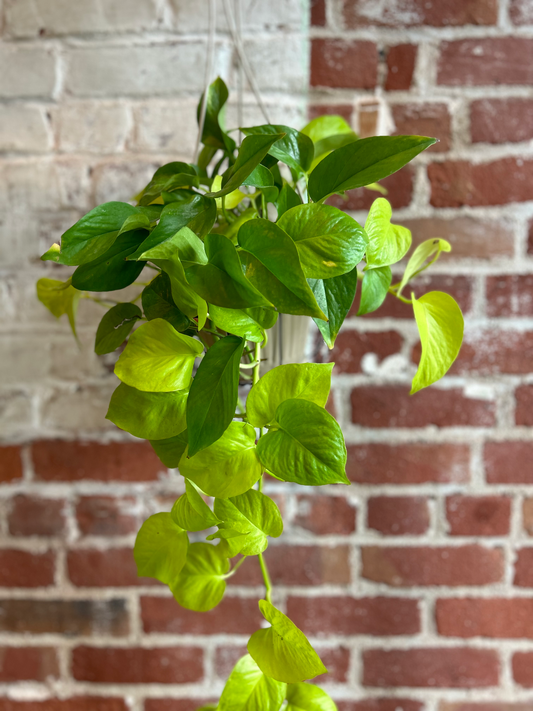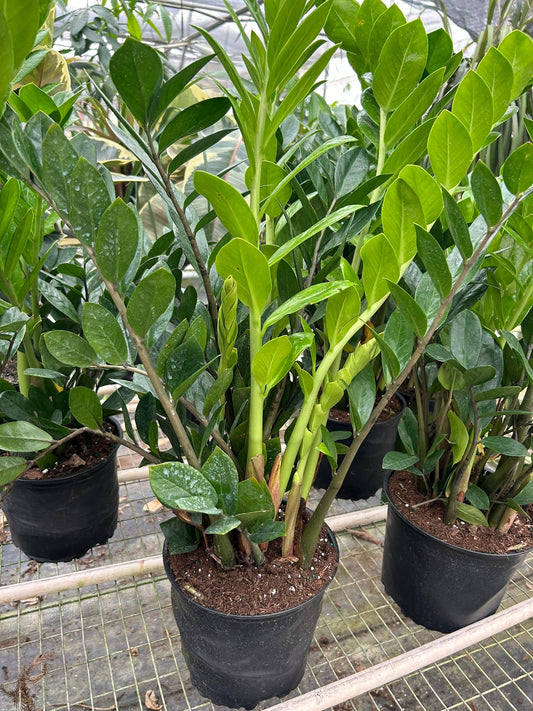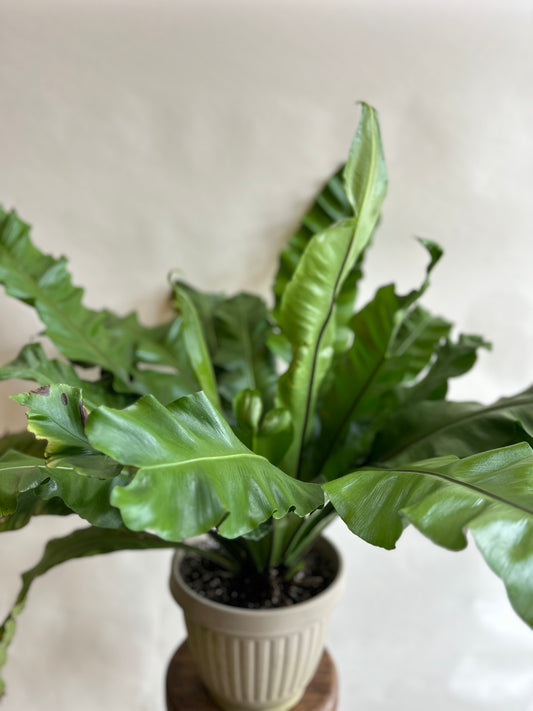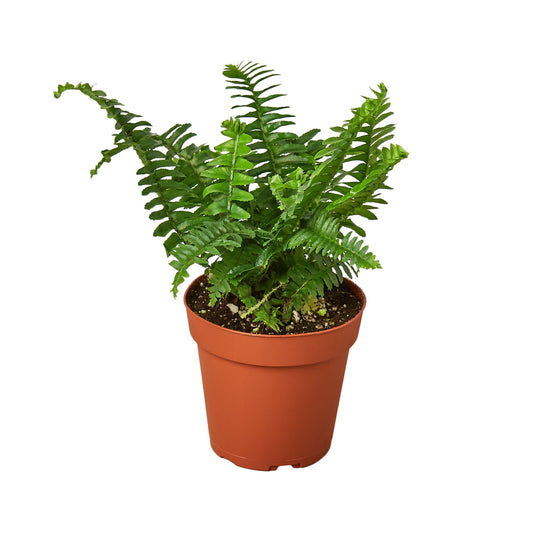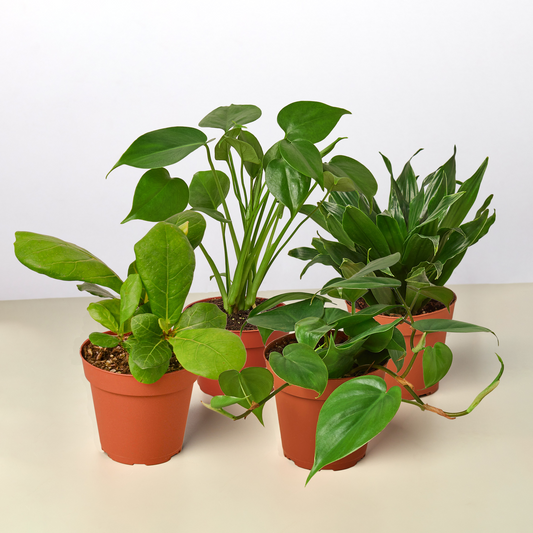What is the Best Soil Type for Black Velvet Alocasias?
Cafe Planta Team
If you're a plant lover with a penchant for unique foliage, you've probably come across the Black Velvet Alocasia. This striking plant, with its dark, velvety leaves, is a real head-turner. But like any superstar, it has specific needs, particularly when it comes to its growing medium.
In this blog post, we'll explore the best soil type for Black Velvet Alocasias, ensuring your plant thrives in its home environment. From understanding the ideal soil composition to practical tips and tricks for maintaining healthy growth, we'll cover everything you need to know.
Understanding Black Velvet Alocasia's Natural Habitat
Before we dig into soil specifics, let's talk about where Black Velvet Alocasias come from. These beauties are native to tropical regions of Southeast Asia, where the climate is humid and the soil is loose and well-draining. In their natural habitat, these plants thrive in the undergrowth of dense forests, absorbing nutrients from decaying organic matter.
This gives us a clue about their preferences: they love a rich, airy, and slightly moist environment. This isn't just a random preference; it's a survival strategy honed over thousands of years. The loose forest floor allows their roots to breathe, while the organic material provides a steady nutrient supply.
Understanding this helps us replicate similar conditions in our homes. When we provide a similar soil environment, we're essentially mimicking their natural habitat, which can significantly boost their growth and health.
The Importance of Well-Draining Soil
One of the biggest mistakes plant parents make with Black Velvet Alocasias is using soil that retains too much water. These plants are highly susceptible to root rot, a condition that occurs when roots are waterlogged for too long.
So, what exactly does “well-draining” mean in this context? Simply put, well-draining soil allows excess water to flow through quickly, preventing the roots from sitting in water. This is vital for Black Velvet Alocasias, as their roots need to breathe.
If you’re wondering how to test your soil’s drainage, here’s a quick tip: Water your plant and observe how long it takes for the water to drain from the bottom. If it takes more than a few seconds, you may need to amend your soil to improve its drainage.
Components of the Ideal Soil Mix
Creating the perfect soil mix for your Black Velvet Alocasia involves a few key components. Here’s a breakdown of what you'll need:
- Peat Moss or Coco Coir: These materials help retain moisture without suffocating the roots. Coco coir is a sustainable alternative to peat moss and offers similar benefits.
- Perlite or Pumice: These are lightweight volcanic rocks that improve aeration and drainage. They prevent the soil from compacting, allowing roots to expand easily.
- Bark Chips: Adding bark chips to your mix mimics the natural forest floor. They decompose over time, adding organic matter to the soil, which is beneficial for nutrient uptake.
- Compost: A small amount of compost can provide essential nutrients. Be cautious, though—too much can lead to moisture retention issues.
By combining these elements, you create a soil that balances moisture retention with excellent drainage, giving your Black Velvet Alocasia the best chance to flourish.
DIY Soil Mix Recipe
If you’re feeling crafty and want to make your own soil mix, here’s a simple recipe to try:
- 2 parts peat moss or coco coir
- 1 part perlite or pumice
- 1 part bark chips
- 1 part compost
Mix these ingredients thoroughly in a large container. This mix provides a well-balanced environment for your Black Velvet Alocasia, promoting healthy root growth and reducing the risk of overwatering.
Remember, the goal is to create a light, airy mix that mimics the plant's natural habitat. Adjust the proportions as needed based on your specific environment and watering habits.
Potting and Repotting Tips
Once you have the perfect soil mix, it's time to pot or repot your Black Velvet Alocasia. Here are a few tips to keep in mind:
- Choose the Right Pot: Select a pot with drainage holes to prevent water from pooling at the bottom. This is crucial for maintaining the well-draining conditions your plant needs.
- Size Matters: Avoid pots that are too large, as they can retain excess moisture. A pot that’s a couple of inches larger in diameter than the root ball is usually a good choice.
- Repotting Frequency: Black Velvet Alocasias don’t need frequent repotting. Every 1-2 years is usually sufficient, or when you notice the roots circling the pot.
When repotting, gently remove the plant from its current pot, being careful not to damage the roots. Shake off excess soil and place it in the new pot with fresh soil mix. Water thoroughly to settle the soil, and voila—your Black Velvet Alocasia is ready to thrive!
Common Mistakes to Avoid
Even with the best intentions, mistakes can happen. Here are a few common pitfalls to avoid when caring for your Black Velvet Alocasia:
- Overwatering: This is the number one killer of Black Velvet Alocasias. Always check the soil moisture before watering.
- Ignoring Drainage: Ensure your pot has adequate drainage holes and the soil mix is well-draining.
- Using the Wrong Soil: Avoid heavy, clay-based soils that retain too much moisture. Stick to the recommended mix for best results.
Learning from these common mistakes can save you a lot of heartache and keep your plant healthy and happy.
Signs of Soil Issues
Even with the perfect soil, issues can arise. Here are some signs that your Black Velvet Alocasia might be struggling with soil-related problems:
- Yellowing Leaves: This can indicate overwatering or poor drainage.
- Root Rot: If you notice a foul smell or mushy roots, it’s a sign of root rot, often caused by waterlogged soil.
- Wilting Leaves: This can be a sign of underwatering or compacted soil.
If you spot any of these signs, it’s time to reassess your soil conditions. Adjust your watering habits or consider repotting with fresh soil to give your plant a fresh start.
Maintaining Soil Health
Once you’ve got your Black Velvet Alocasia in the right soil, the journey doesn’t stop there. Maintaining soil health is an ongoing process. Here are some tips to keep your soil in top shape:
- Regular Checks: Periodically check the soil’s moisture and drainage to ensure it remains optimal.
- Fertilization: Use a balanced, water-soluble fertilizer during the growing season to provide essential nutrients.
- Avoid Compaction: Gently aerate the soil with a chopstick or similar tool if it starts to compact.
By staying on top of these practices, you can keep your Black Velvet Alocasia thriving for years to come.
Final Thoughts
Caring for a Black Velvet Alocasia can be a rewarding experience, especially when you nail down the right soil conditions. From creating a well-draining soil mix to understanding the plant's natural habitat, each step ensures your plant is set up for success.
At Cafe Planta, we're passionate about helping plant lovers nurture their green companions. Whether you're looking for new plants to add to your collection or need advice on plant care, we're here to help. Feel free to email us with any questions, or connect with us on Instagram. Let's grow together!


